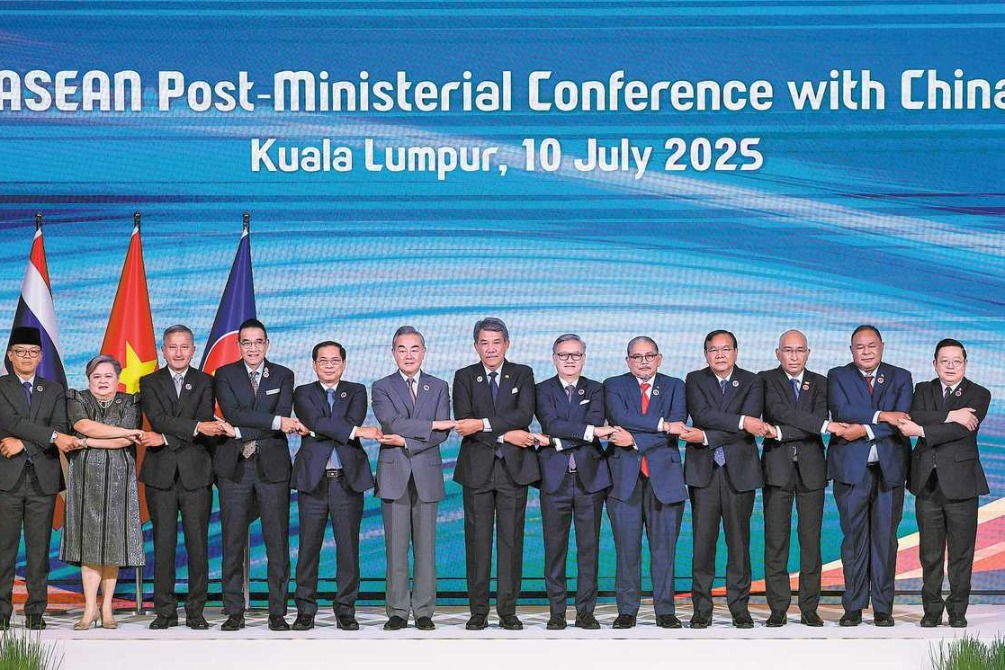BRI hardware needs matching 'software'


It has been a glorious "BRI decade", to say the least. During the past 10 years, the Belt and Road Initiative — from initial concept to fast, multitracked implementation — has doubtlessly emerged as one of the greatest-ever plans for transnational connectivity and development.
Excellent communications infrastructure — the much-needed hardware of transnational connectivity — and efficient, large-scale energy generation projects, which are key to the smooth running of economic activities, have been constructed in a number of countries as part of the BRI.
Huge economic activity has been generated, large numbers of jobs have been created, industries and production have flourished, trade has multiplied and quality of life has improved as a result. The BRI is now a wonderful set of cooperative activities involving infrastructure, finance, commerce and technology, as well as people-to-people exchanges. All in all, it has been a decade of win-win cooperation between China and other nations involved in building the Belt and Road.
However, as is universally known, all hardware needs matching software for it to be lasting, durable and sustainable. For a mega-program such as the BRI, it is very important to ensure matching "software", in a new era that highlights high-quality development, along with the crucial hardware that is being built.
So the question is, what do we mean by the "software" of the BRI? To be sure, we aren't referring to software in the computer sense.
In terms of BRI "software", the first and foremost thing is proper image building. The negative portrayal by anti-BRI forces is strong compared with the positive projection of its benefits by China and other countries involved. Untrue propaganda about the so-called "debt trap", and unfounded propaganda from Western media outlets in the name of fallacies such as "new colonialism" are increasing despite a number of clarifications from Beijing and its partner countries.
The need is to bring forth the truth as forcefully as the negative propaganda has unfolded and continues to unfold. Large-scale, specifically targeted, media and social media collaboration, and academic exchanges between China and partner nations for the specific purpose of image building, need to be devised and implemented.
Connectivity is primarily for the purpose of facilitating cross-border trade and the smooth movement of people. Connectivity hardware is to be supplemented by free and preferential, win-win trade arrangements for desired results. China and partner countries need to ensure mutually beneficial bilateral and regional trade arrangements, in which no party feels flooded with one-way traffic of goods or services.
Connectivity also refers to the smooth movement of people. For this, immigration and customs laws, regulations and procedures have to be harnessed in a way that BRI-built infrastructure becomes rewarding for all partners.
We must keep in mind that wherever there is increased business activity, interbusiness frictions are bound to grow. A full-fledged business dispute settlement mechanism — a few steps toward which have already been taken in recent years — would be instrumental to the long-term success of the BRI and should be a priority.
With increased people-to-people exchanges, which are among the major goals of the BRI, it also becomes vital to sensitize businesspeople, investors and the workforce about the cultural, social and religious norms of partner nations. This is of high significance for the mutual goodwill to continue, and for people to feel good about one another.
Moreover, in the prevailing setting, there is an immediate need to bridge the very noticeable digital divide between China and the BRI partner nations. Steps toward that are also being taken, but more needs to be done on the fast track.
The first decade of the BRI, which was proposed in 2013, has been a decade of building phenomenal hardware. The next decade must be one of providing the matching "software".
This is very important for the journey toward a shared future, the journey toward a shared destiny. It is not to say that nothing has been done on the aforementioned points. Some steps have indeed been taken. But the progress on the "software" side has been rather slow, not matching the progress on hardware.
It is hoped that policymakers and decision-makers in China and BRI partner nations, as well as in relevant institutions, will pay greater attention to the "software "of the Belt and Road.
The author is founding president of the Eurasian Century Institute, Islamabad-Pakistan.
































